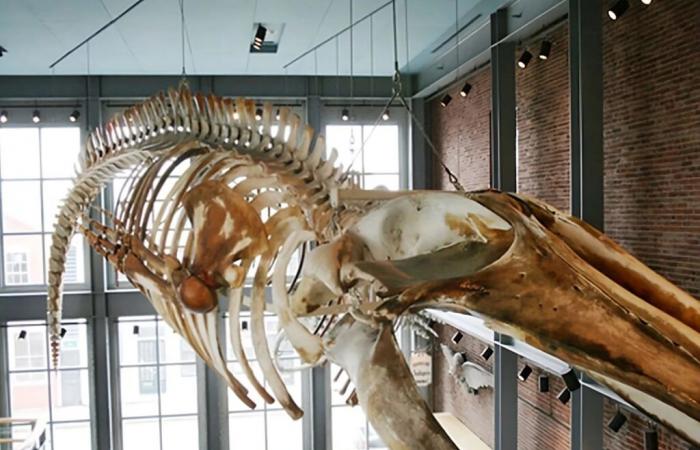At first glance, a whale skeleton might seem like a mere relic of the past. However, that of KOBO, a blue whale, reveals an unexpected surprise. Despite his death more than twenty years ago, his story does not seem to be over.
KOBO’s skeleton is on display at the New Bedford Whaling Museum in the United States. Discovered in dramatic circumstances, this animal crossed paths with a tanker, which cost it its life. The tragic KOBO accident raises questions about the dangers facing these giants of mers.
The blue whale is one of the largest animals on Earth, measuring up to 24 meters and weighing up to 150 tonnes. However, this species is threatened, with population mondiale having dropped from 125,000 to around 3,000 individuals in less than a year century. Intensive hunting over the past decades has been instrumental in this decline. But back to KOBO. The cleansing of his body took five months. After his death, his bones were submerged in the waters of New Bedford Harbor to remove remaining organic tissue. A meticulous process, but which did not result in the complete extraction of theoil present in his bones.
Thus, KOBO continues to produce oil, a fascinating phenomenon for visitors. This substance, which escapes slowly, reminds researchers of the importance of oil for living whales, serving for their thermal insulation and as a source of energy. Devices have been installed to recover this oil, in order to avoid inconvenience for visitors. However, this oil leak also allows us to imagine the living conditions on board the whaling ships of yesteryear.
Whale oil has historically had many applications, ranging from lubrication to lighting. In the 19th century, it was so sought after that it was even used to make explosives during the world wars. This historical context further enriches the KOBO story.
Today, KOBO’s skeleton continues to fascinate scientists and enthusiasts alike. Despite his death, his legacy lives on, highlighting the issues surrounding the conservation of marine species. KOBO is not just a skeleton; it is a living symbol of the fight to protect the oceans.






